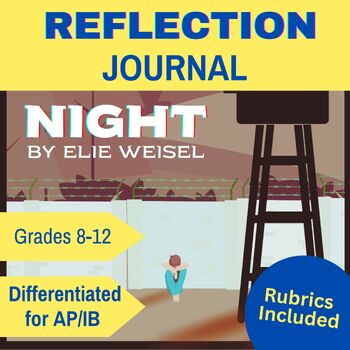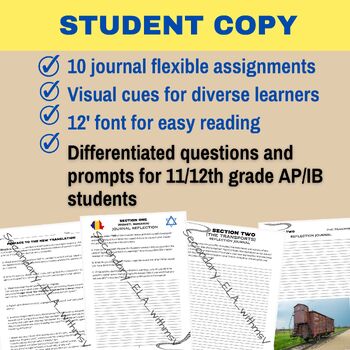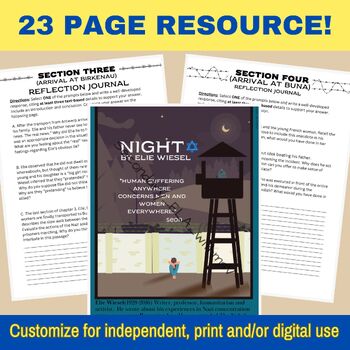Night Elie Wiesel Student Reflection Journal with Rubric AP/IB
- PDF
Description
Elie Wiesel's harrowing tale of survival is a crucial addition to any secondary literature unit. Night is one of the most powerful books I have ever read on my own and with my students. I believe it is one book all students must read before they graduate from high school. This Student Journal will allow your students to explore and respond to the memoir's over-arching themes of empathy, inclusion, justice, and freedom.
I included several prompts based on the Preface to the New Translation that I designed for 11th, 12th and AP students.
This resource includes the following:
- Reflection Journal for Students
- Differentiated Questions/Discussion Prompts for grades 11+ and Advanced Classes
- Rubric for easy grading
- Classroom Poster to increase student engagement
This resource was designed with flexibility in mind. It may be used as a traditional paper-based assignment or completed digitally. The entire resource may be assigned as a workbook, or you may can select the sections and prompts that best suit your students' needs.
If you enjoyed this resource, please consider leaving feedback and following me on my platforms.
Happy reading and annotating!
Christine Varvaro
Secondary ELA with MsV





